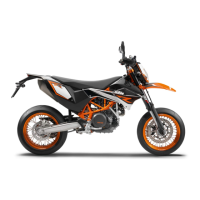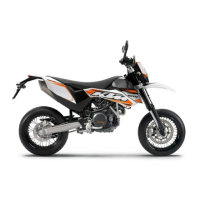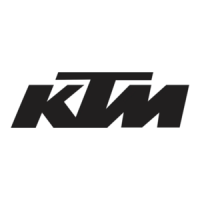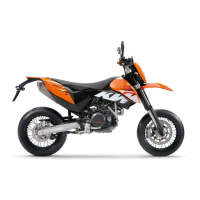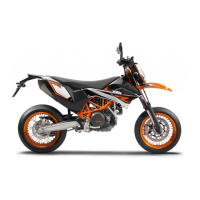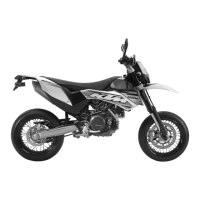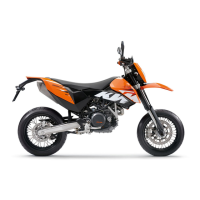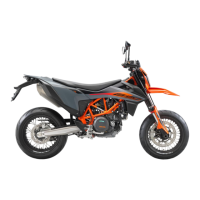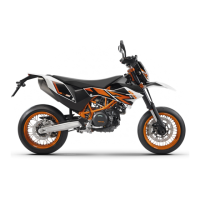400926-10
– Mount special tool 2.
Pressure testing tool (61029094000) ( p. 213)
– Mount special tool 3 with nozzle code 0,60.
Testing hose (61029093000) ( p. 213)
– Insert the hose end in a fuel canister.
Guideline
Minimum fuel canister capacity 10 l (2.6 US gal)
– Perform the "Actuator Test" > "Function test of fuel pump control".
Guideline
Maximum duration of actuator test 3 min
400927-01
– Check the fuel pressure with the filler cap closed.
Fuel pressure
When the fuel pump is active 3.3… 3.7 bar (48… 54 psi)
» If the specification is not reached:
– Open the filler cap. ( p. 59)
– Check the fuel tank breather.
400928-01
– Check the fuel pressure with the filler cap open.
Fuel pressure
When the fuel pump is active 3.3… 3.7 bar (48… 54 psi)
» If the specification is not reached:
– Check that the fuel line is clear.
– Change the fuel filter. ( p. 61)
– Change the fuel pump. ( p. 64)
– Stop the "Function test of fuel pump control" actuator test by pressing the "Quit" but-
ton.
– Dismantle the special tools.
– Connect the fuel hose connection.
11.8 Changing the fuel filter
Danger
Fire hazard Fuel is highly flammable.
– Never refuel the vehicle near open flames or burning cigarettes, and always switch off the engine first. Be careful that no
fuel is spilt, especially on hot vehicle components. Clean up spilt fuel immediately.
– The fuel in the fuel tank expands when warm and may emerge if overfilled. Follow the instructions on refueling.
Warning
Danger of poisoning Fuel is poisonous and a health hazard.
– Fuel must not come into contact with the skin, eyes, or clothing. Do not breathe in the fuel vapors. If contact occurs with
the eyes, rinse with water immediately and contact a physician. Immediately clean contaminated areas on the skin with
soap and water. If fuel is swallowed, contact a physician immediately. Change clothing that is contaminated with fuel.
Store fuel properly in a suitable canister and keep away from children.
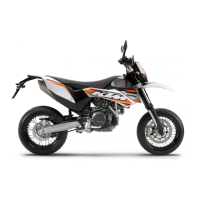
